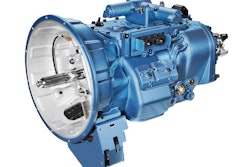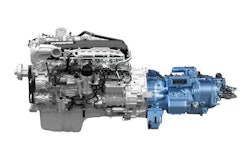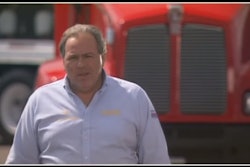Note: This is the second part of a two-part series. Click here to see Part 1.
A future with fleets?
If one takes a step back and looks at the entire heavy-duty market, it’s easy to see a vibrant customer base for manual gearboxes, says Mack’s Stu Russoli.
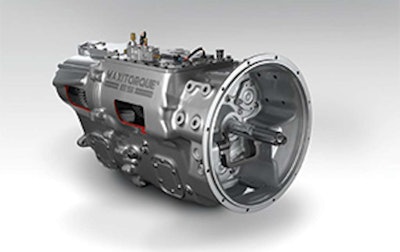 Manual transmissions such as Mack’s Maxitorque ES not only offer a desirable wide overall ratio with extra low gears for slow speed but also have more gear steps to keep the engine dialed into the ideal operating range.
Manual transmissions such as Mack’s Maxitorque ES not only offer a desirable wide overall ratio with extra low gears for slow speed but also have more gear steps to keep the engine dialed into the ideal operating range.“If you draw a line between highway and vocational trucks, you will see two fairly distinct sets of priorities and needs for manual transmission customers,” he says. “While it’s true that AMTs are making significant gains in market share, conventional manual transmissions shouldn’t be written off just yet. They are not going away for the foreseeable future.”
On the highway side, basic 10-speed manual transmissions remain common, Russoli says. “Regardless of whether it’s for a highway or vocational application, manual transmission customers are looking for a transmission that is durable, easy to shift, reliable and easy to service,” he says. “Simplicity and familiarity with the technology still play an important part in the purchase decision.”
The bulk of Eaton’s research and development is in automation these days, but Trzybinski says the company’s new Fuller Advantage manual line features several upgrades designed specifically to target maintenance issues and improve overall functionality and performance.
An overdrive version was launched toward the end of 2013, and a direct-drive version arrived this year. The 10-speed manual doesn’t need an external cooler, which Trzybinski says saves maintenance costs and eliminates burn-up risk possibly caused by a pinched line or improper cooler maintenance.
“When a customer pinches a line, it is a nonwarrantable failure, meaning that’s a mistake that they make and is not the transmission’s fault,” he says. “We’ve eliminated the root cause for that happening, so we are reducing our customer’s costs.”
Other Advantage series upgrades include a new precision gear lubrication system designed to eliminate churn loss and yield 1.5 to 2 percent better fuel economy. “We also reduced the weight up to 70 pounds less than our previous 10-speed models,” Trzybinski says. “The Fuller Advantage manual is an excellent product, and customer feedback has been very good. Our customers are seeing good value in these transmissions.”
While AMTs are enjoying a surge in the on-highway market, they have been slow to catch on in vocational applications where fleets look for different benefits and features from manual gearboxes.
Russoli says manual transmissions such as Mack’s Maxitorque ES – available with 10, 13 and 18 speeds – not only offer a desirable wide overall ratio with extra low gears for slow speed but also have more gear steps to keep the engine dialed into the ideal operating range.
Manuals also easily can accommodate customized power-takeoff speed controls, multiple special PTOs, multispeed reverse and range case neutral, all positives in vocational applications, he says.
It’s a trend Eaton also has noticed. “In vocational applications, manuals are holding a much stronger presence than in line haul,” Trzybinski says. “Our 18-speed manual and 13-speed manual do really well in these applications. As the experience of the drivers goes up, the comfort level and the desire to stay in a manual also goes up.”
Good to have a choice
For many fleets, having two highly successful transmissions in the market simply means more flexibility when it comes to spec’ing for different applications and pleasing drivers.
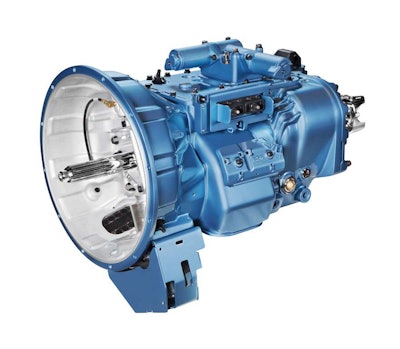 Eaton’s Fuller Advantage manual transmission line features several upgrades designed to target maintenance issues and improve overall functionality and performance, such as a new precision gear lubrication system.
Eaton’s Fuller Advantage manual transmission line features several upgrades designed to target maintenance issues and improve overall functionality and performance, such as a new precision gear lubrication system.“A lot of customers are saying ‘Hey, I have a transmission that lasts forever and meets my expectations in terms of durability with very minimal service issues and is performing great. Why would I change it? And I still have quality experienced drivers who prefer manuals,’ ” Trzybinski says.
The other important point is a price break at a time when vehicles and mandated components are becoming ever more expensive – a critical consideration for smaller fleets and independents, he says.
“They want quick payback on their investment,” Trzybinski says. “Many of our manuals deliver fuel economy improvements that show a positive payback, which is very important to customers. Today’s fleets, in many cases, are making very sophisticated analysis on payback when making buying decisions, and transmission choice is no different.”
Russoli agrees that price remains important for fleets. “However, while the initial cost for a manual transmission is less, customers receive a very favorable return on their investment when spec’ing an AMT because of increased fuel efficiency and improved driver comfort,” he says.
“Also, today’s AMTs are very smart and, in many cases, can prevent a driver from doing something that would otherwise damage a conventional manual transmission, engine or driveline. Those are the high-level factors that fleets have to consider when deciding on a manual or automated transmission spec.”
This is the second part of a two-part series. Click here to see Part 1.


